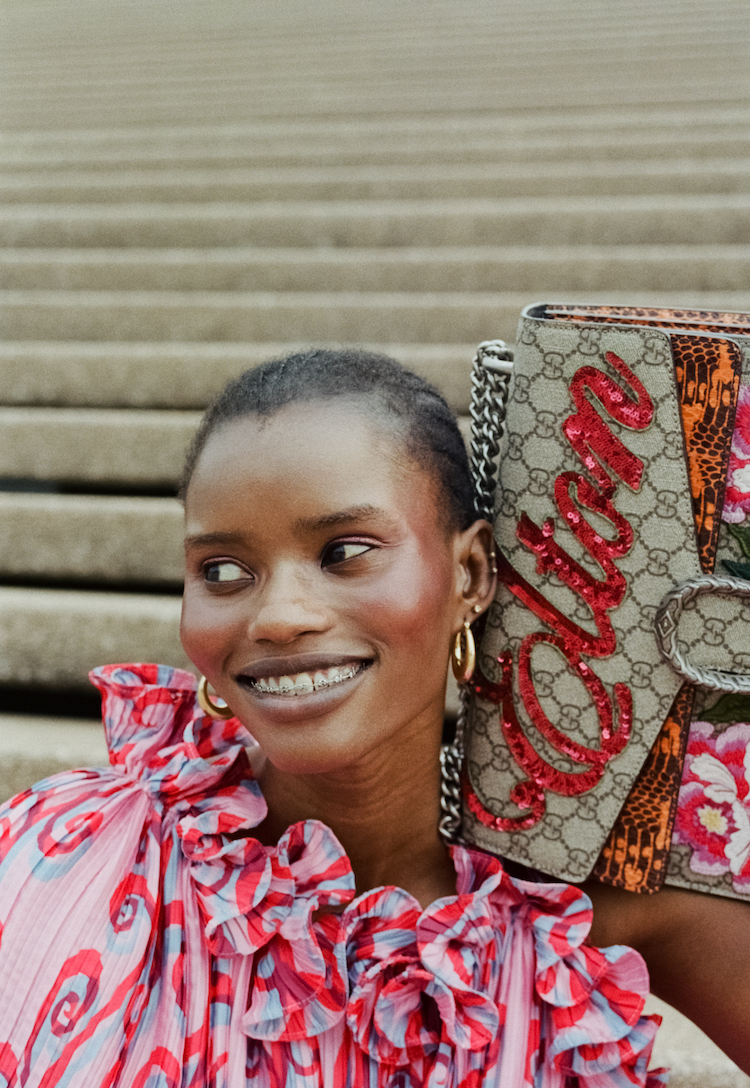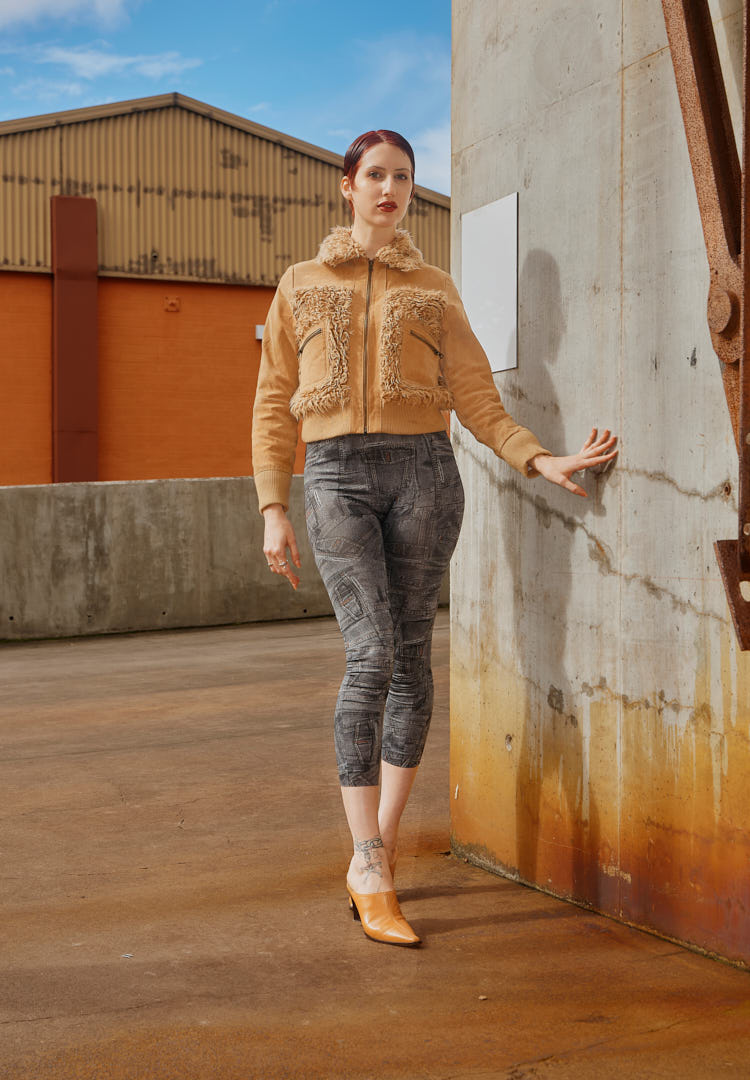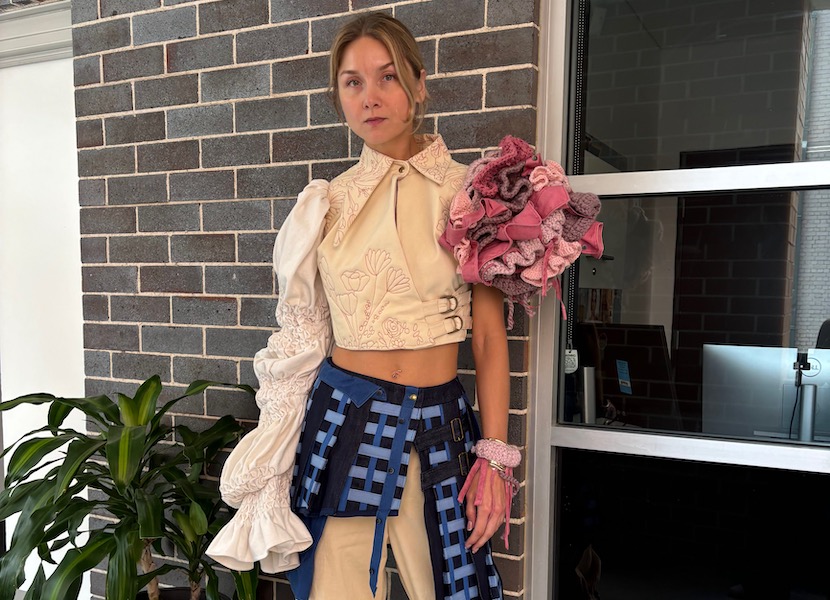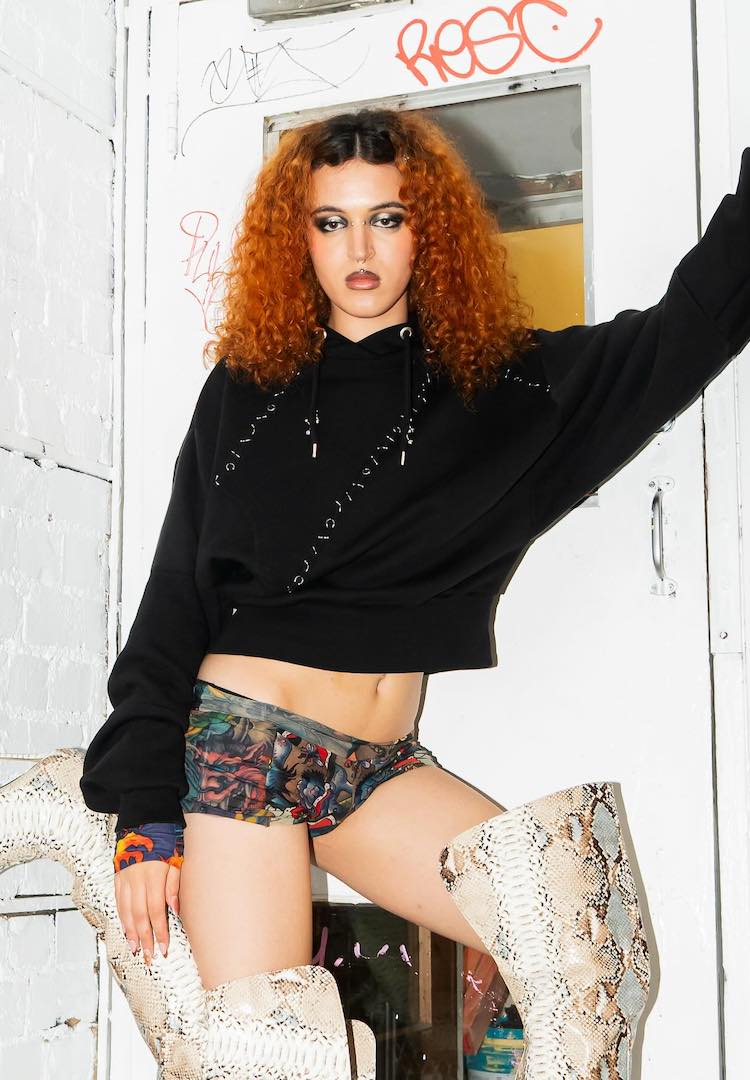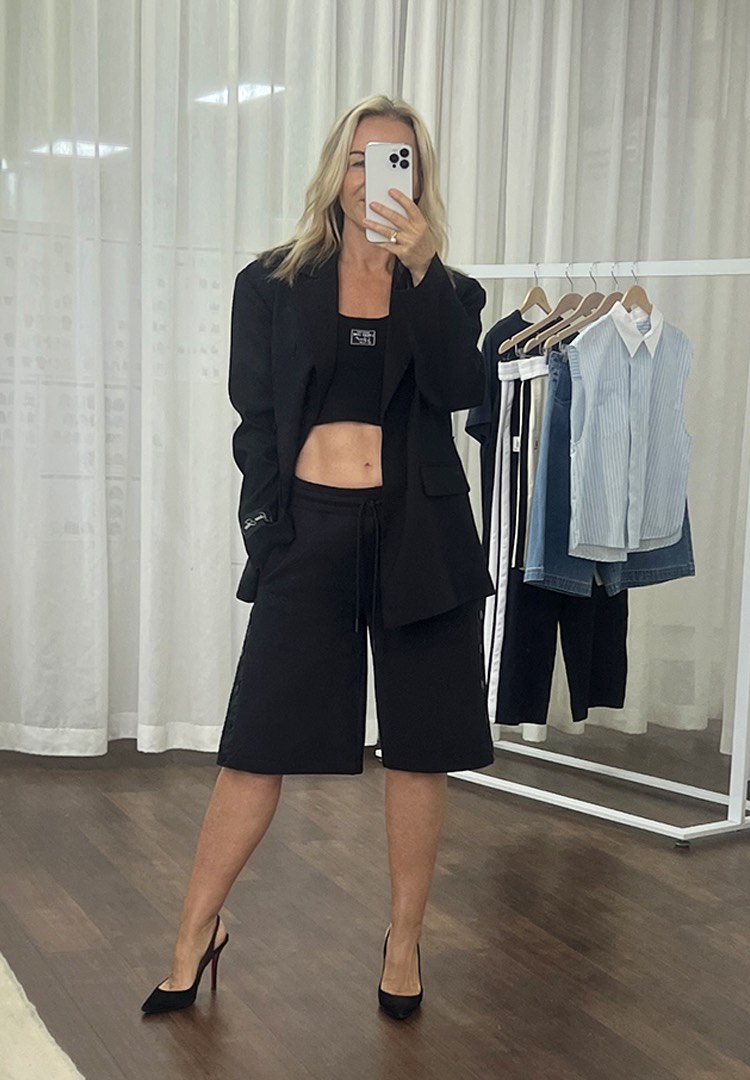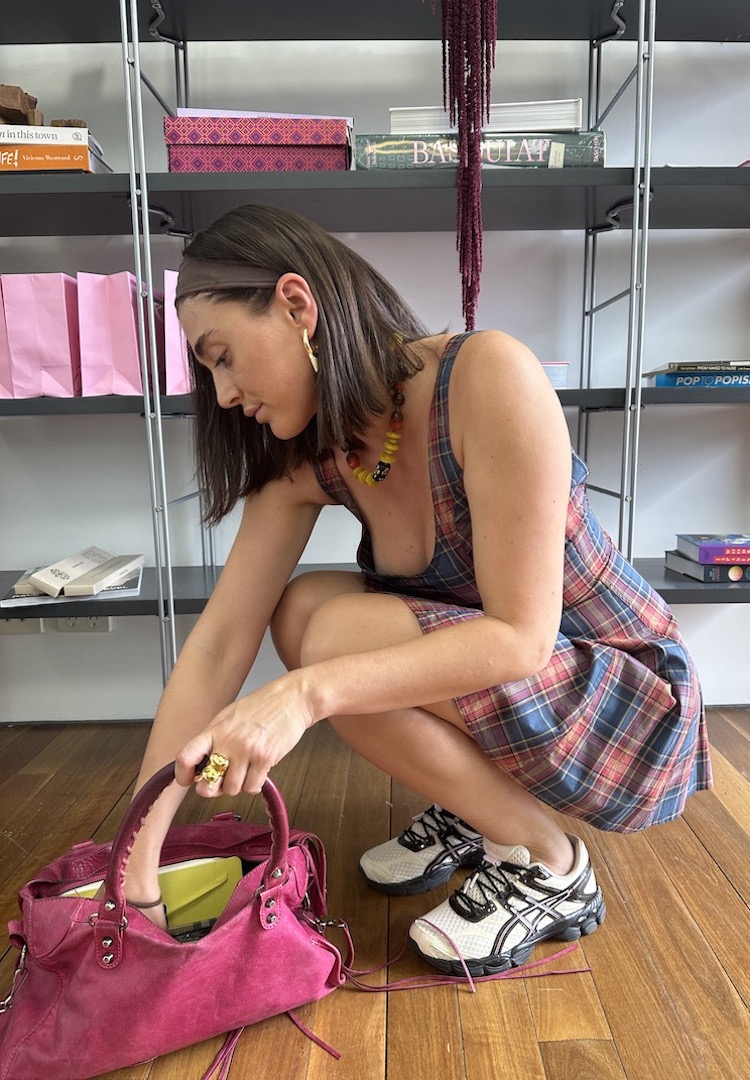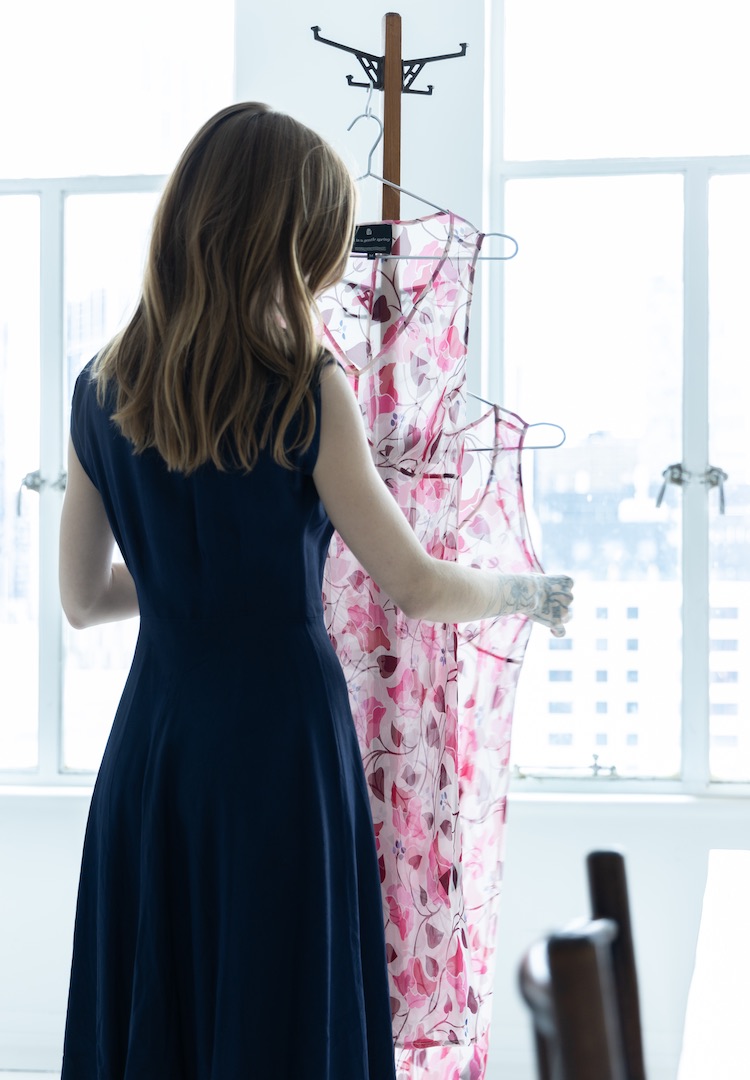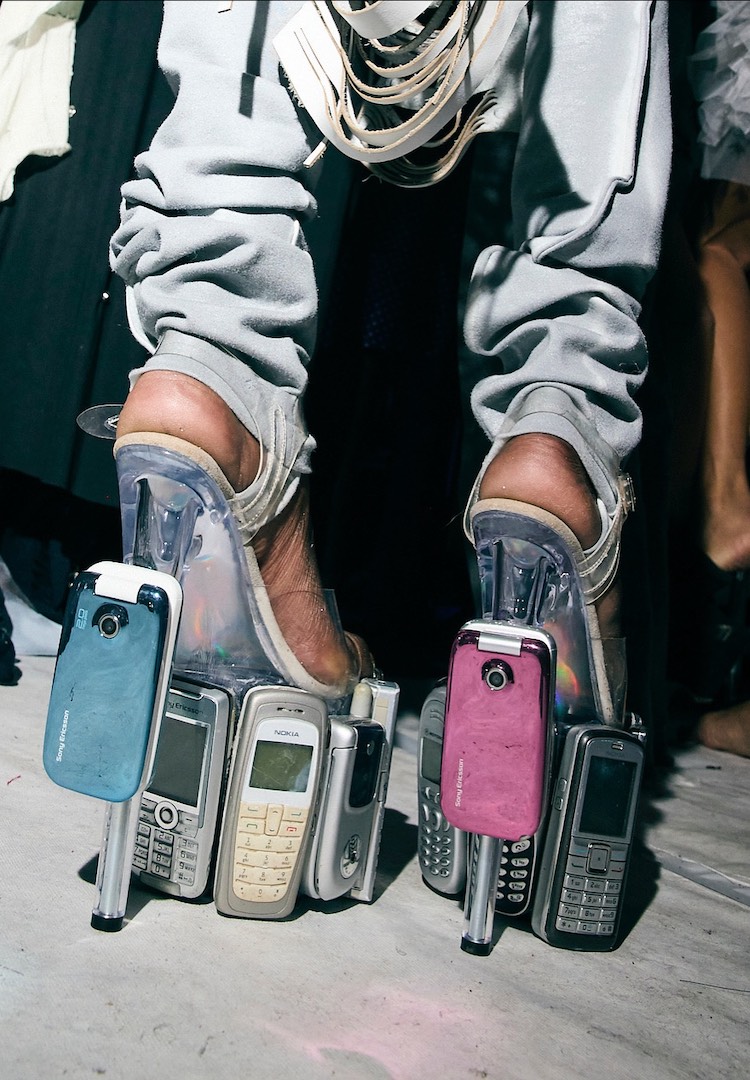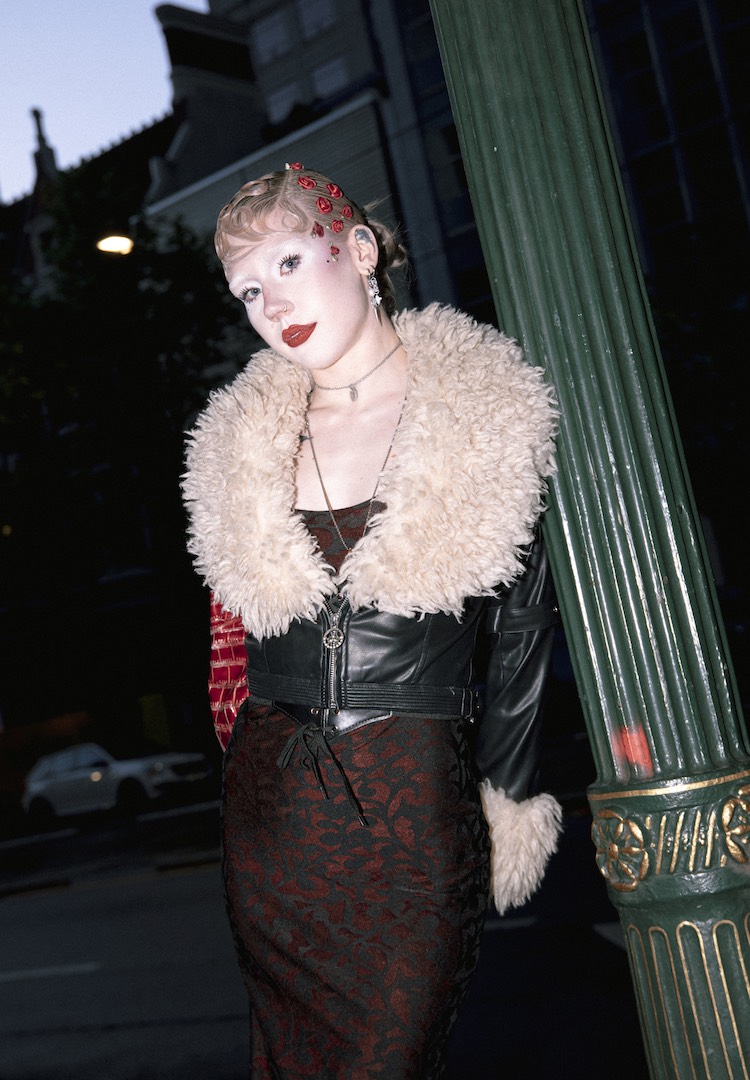Two fashion students show us how they’ve upcycled old shirts
Photo by Gabriella Ribeiro
words by Lara Daly
“Every used garment and material has a story to tell.”
An antidote to the fast fashion trend cycle, videos on upcycling have been flooding our TikTok and Instagram feeds lately, offering creative ideas to transform old clothing. Whether it’s a shirt that’s falling apart at the seams or a pair of jeans on its last legs, watching someone redesign a garment that’s destined for landfill is the fashion equivalent of making pasta puttanesca: creating something using only what you have on hand.
With the fashion industry’s mounting problems of overconsumption and overproduction, it’s no surprise that sustainability is a core focus for today’s fashion design students. When curriculums encourage designers to consider both the lifecycle of a garment and the environmental impact of textile production, we see innovation like zero-waste patterns, sustainable material alternatives and of course, creative upcycling.
For more fashion news, shoots, articles and features, head to our Fashion section.
For students, upcycling provides an additional layer of learning – you naturally discover more about a garment’s construction, fabric and history when you start picking it apart. “Every used garment and material has a story to tell and I feel it’s the designer’s responsibility to bring those blemishes, stains and tears in the fabric to the foreground,” says Alex MacColl, a fashion design student at University of Technology Sydney. “I’d argue that it’s the tensions between my own vision and the narratives of found materials that informs insightful and exciting designs.”
Fellow student, Gaby Ribeiro from Fashion Design Studio in New South Wales, agrees the challenge of working with something old can inspire more creative thinking. “I’ve long been inspired by the notion that ‘what is discarded by one can become valuable to another’,” she says. Below, Alex and Gaby share a detailed look inside their recent upcycling projects, using pre-loved shirts.
Alex MacColl, UTS fashion design student
Fashion Journal: Hi Alex, tell me about what you’re studying and how upcycling informs your practice?
Alex: I’m in my second year at UTS studying a Bachelor of Design in Fashion and Textiles, and Bachelor of Creative Intelligence and Innovation. My studies cover patternmaking, construction, textile design and fashion theory. My second degree, Creative Intelligence and Innovation encourages me to apply my core fashion knowledge in creative ways to solve various problems. Within fashion theory specifically, the course emphasises the importance of integrating upcycling into our practice as the foundation for insightful, sustainable and enduring designs. We look to the deconstructive practices of Martin Margiela in particular for tactile and theoretical inspiration.
Talk me through your recent upcycling project – what did you make and what was the process like?
During our Fashion Cultures subject, we were tasked with upcycling two collared shirts, sourced from deadstock garments supplied by MJ Bale and a charity store respectively. Even before I deconstructed them, I spent the majority of my time in a process journal, collaging photos of the shirts on bodies and illustrating potential silhouettes, lines and directions of movement.

The task required us to fully deconstruct both shirts into all their pattern pieces and rejoin the seams in new ways, ensuring every piece of fabric was used. My vision formed from the constant reimagining and reframing of the garments in my journal, as I gradually deconstructed them. Though I had a vision of an adjustable hood component in mind, the process relied heavily on my intuition and sensitivity to how the garment’s previous form guided its transformation.


The final garment, for me, reveals the moments of tension, frustration and excitement I had throughout the upcycling process. It has moments of detail where I brought labels, tags and stains to the foreground, and contrasting moments of expanse so that the body might have freedom to interact with the garment’s new affordances for movement. The hood, which I successfully incorporated, has different fastening options and protrusions made from the shirt’s cuffs.

Gaby Ribeiro, FDS fashion design student
Fashion Journal: Hi Gaby, tell me about what you’re studying and how upcycling informs your practice?
Gaby: I’m currently studying a Bachelor of Fashion Design at FDS, in the second year of my studies. For me, upcycling represents the opportunity to extend the life cycle of materials by reimagining their purpose. In the context of my fashion studies, this manifests through a practice of thoughtful deconstruction and reconstruction, repurposing garments and fabrics into unique contemporary pieces that speak to innovation and sustainability.
Talk me through your recent upcycling project – what did you make and what was the process like?
For this project, I wanted to create an interpretation of bohemianism with reworked structural fragmentation and asymmetry. The brief characterises ‘a nod to the past, a reworking for the future’ and my main inspiration was Vanessa Bell, a post-impressionist painter known for her significant contribution to the interior designs of the Bloomsbury group. Bell’s unique use of pastel tones and hues allows the creation of a playful, bohemian composition.

I upcycled pre-loved MJ Bale shirts, transforming them into a crocheted sleeve that became a focal point of my design. This process allowed me to reflect not only on the importance of repurposing materials but also on the creative potential that exists within discarded or surplus garments. Throughout my studies, I’ve enjoyed exploring how traditional and experimental techniques can intersect to promote more conscious fashion outcomes. For example, I’ve integrated natural dyeing processes into my work, experimenting with food waste as a way to investigate environmental issues and non-toxic methods.



In this project, I expanded further by incorporating textile techniques like quilting and weaving to add depth and narrative to the overall piece. By incorporating an upcycled shirt, I explored denim weaving – the mixed weave of recycled denim and the upcycled shirt created a unique texture, both physically and through colouration.

My final design explores dramatic silhouettes and textual layers, evident in the honeycomb smoked puff sleeve (inspired by Frank Gehry’s Luma Tower in France and the unique panelling design on the building) and the crochet ruffle sleeves, a nod to bohemian style. My design further explores abstractions of the natural world through textual application, inspired in part by Vanessa Bell’s circa 1940 painting of a floral arrangement, emphasised through a quilting technique on the jacket.

For more tips on upcycling your clothing, head here.

